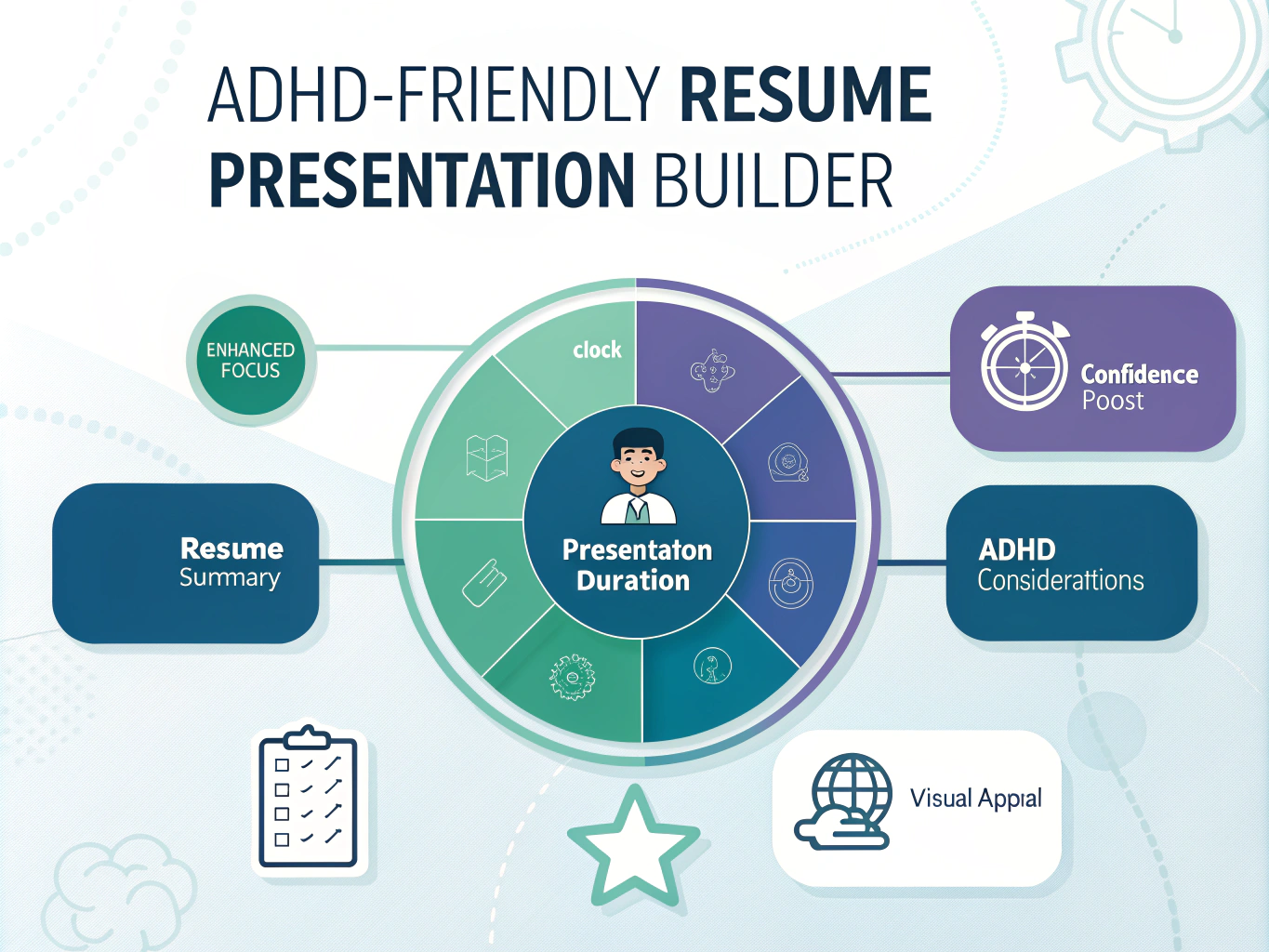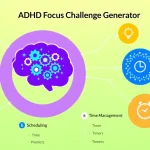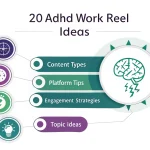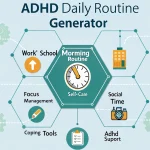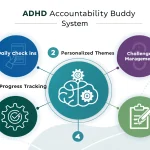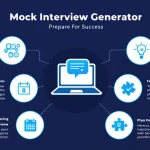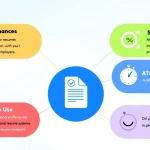Is this tool helpful?
How to Use the Resume-to-Presentation Strategy Generator Effectively
To make the most of this powerful Resume-to-Presentation Strategy Generator, follow these simple steps:
- Provide a Resume Summary: In the first field, enter a concise summary of your resume, highlighting your key experiences, skills, and qualifications. For example:
- “10 years of experience in digital marketing, specializing in SEO and content strategy. Proficient in Google Analytics and Adobe Creative Suite. MBA in Marketing from XYZ University.”
- “Mechanical engineer with 7 years of experience in automotive design. Expert in CAD software and project management. Led cross-functional teams in developing innovative drivetrain solutions.”
- Specify Presentation Duration: Enter the expected duration of your presentation in the second field. This helps tailor the strategy to fit within your allotted time. For instance:
- “7 minutes”
- “15 minutes”
- ADHD Considerations (Optional): If you have specific ADHD-related challenges or considerations, describe them in the third field. This information will be used to customize the strategy to your needs. For example:
- “Difficulty staying on topic during extended explanations. Prefer visual aids to maintain focus.”
- “Tend to speak quickly when nervous. Need reminders to pace myself and emphasize key points.”
- Generate Strategy: Click the “Generate Presentation Strategy” button to create your personalized plan.
- Review and Copy: Once generated, review the strategy in the results section. Use the “Copy to Clipboard” button to easily save and use the information elsewhere.
Transform Your Resume into a Captivating Interview Presentation
In today’s competitive job market, standing out during an interview is crucial. The Resume-to-Presentation Strategy Generator is an innovative tool designed to help job seekers, especially those with ADHD, create compelling and focused interview presentations based on their resumes. This tool transforms your professional experience into a structured, engaging, and easy-to-follow presentation format, ensuring you make a lasting impression on potential employers.
The Power of Visual Presentations in Interviews
Visual presentations during interviews offer numerous advantages:
- Enhance information retention for both the presenter and the audience
- Provide a structured framework to keep the discussion on track
- Demonstrate preparation and professionalism
- Allow for a more interactive and engaging interview experience
- Help candidates with ADHD maintain focus and organize their thoughts
By leveraging the Resume-to-Presentation Strategy Generator, you’re not just reciting your resume; you’re crafting a narrative that showcases your unique value proposition to potential employers.
Benefits of Using the Resume-to-Presentation Strategy Generator
1. Tailored Strategies for ADHD Individuals
One of the standout features of this tool is its ability to create strategies that cater to the specific needs of individuals with ADHD. By considering ADHD-related challenges, the generator produces presentations that:
- Maintain focus through structured content and visual cues
- Incorporate frequent transitions to keep engagement high
- Utilize color coding and visual hierarchies to aid information processing
- Suggest interactive elements to boost attention and retention
2. Time-Efficient Presentation Creation
Crafting an effective presentation can be time-consuming, especially when you’re juggling multiple job applications. This tool streamlines the process by:
- Automatically organizing your resume content into a logical slide structure
- Suggesting optimal slide numbers based on your presentation duration
- Providing tips for concise phrasing to maximize impact in limited time
3. Enhanced Focus and Clarity
The strategies generated by this tool are designed to keep both you and your interviewers focused on the most relevant aspects of your professional background. Benefits include:
- Clear, bullet-point formats that are easy to follow and remember
- Emphasis on key achievements and skills that align with job requirements
- Suggestions for visual aids that reinforce your main points without overwhelming
4. Improved Confidence and Preparation
By providing a structured approach to presenting your resume, this tool helps boost your confidence in several ways:
- Offers a clear roadmap for your presentation, reducing anxiety about forgetting important points
- Suggests practice techniques to help you internalize the content
- Provides tips for handling potential questions, preparing you for interactive discussions
5. Versatility Across Industries and Experience Levels
Whether you’re a fresh graduate or a seasoned professional, this tool adapts to your needs:
- Suggests different presentation structures based on career stage and industry norms
- Offers tips for highlighting transferable skills for career changers
- Provides strategies for showcasing both technical expertise and soft skills
Addressing User Needs and Solving Specific Problems
Tackling Information Overload
One common challenge in interviews is presenting years of experience concisely without omitting crucial details. The Resume-to-Presentation Strategy Generator addresses this by:
- Suggesting methods to condense information, such as using impact-driven statements
- Recommending the use of quantifiable achievements to represent broader skill sets
- Providing guidelines on prioritizing experiences based on relevance to the target role
For example, instead of listing all responsibilities from a previous role, the tool might suggest focusing on a key achievement:
“Led a team of 5 developers to launch a new CRM system, resulting in a 30% increase in customer retention rates within 6 months.”
Maintaining Engagement Throughout the Presentation
For candidates with ADHD, maintaining focus during a presentation can be challenging. The tool addresses this by:
- Suggesting the incorporation of interactive elements, such as brief Q&A segments between sections
- Recommending the use of varied visual aids to maintain interest
- Providing tips on body language and vocal variety to keep the audience engaged
A sample strategy might include:
“After discussing your role at Company X, pause and ask the interviewer if they have any questions about your experience there. This breaks up the monologue and ensures understanding before moving on.”
Aligning Presentation with Interview Flow
The tool ensures your presentation complements the natural flow of an interview by:
- Suggesting an order of slides that mirrors common interview question sequences
- Providing transition phrases to smoothly move between topics
- Offering tips on how to adapt the presentation on-the-fly based on interviewer cues
For instance, the tool might recommend structuring your slides as follows:
- Brief personal introduction
- Career overview timeline
- Deep dive into most relevant experiences
- Key skills and achievements
- Future goals and why this role
Practical Applications and Use Cases
Scenario 1: Fresh Graduate in Computer Science
Sarah, a recent Computer Science graduate, is interviewing for her first software developer role. She uses the Resume-to-Presentation Strategy Generator to create a 5-minute presentation. The tool suggests:
- Opening with a brief introduction and her passion for coding (30 seconds)
- Highlighting her top 3 academic projects, focusing on problem-solving skills and technologies used (2 minutes)
- Showcasing her internship experience, emphasizing teamwork and real-world application of skills (1 minute)
- Concluding with her technical skills summary and eagerness to learn (1 minute)
- Ending with a slide on why she’s excited about this specific company and role (30 seconds)
The tool also suggests using GitHub repository screenshots to visually represent her projects, making the presentation more engaging and proof-oriented.
Scenario 2: Mid-Career Professional with ADHD
Mark, a marketing manager with 8 years of experience and ADHD, is interviewing for a senior role. He uses the tool to create a 10-minute presentation strategy. The generator provides:
- A color-coded slide structure to help Mark stay on track
- Suggestions for incorporating brief storytelling elements to make key points more memorable
- Tips on using hand gestures to emphasize points and maintain personal focus
- A recommendation to include a slide with a visual timeline of his career progression
- Advice on creating a “key achievements” slide with impactful metrics and results
The tool also suggests Mark practice with a timer and use the slide animations as cues to move to the next point, helping him pace his presentation effectively.
Scenario 3: Career Changer
Lisa, a former teacher transitioning to a corporate training role, uses the tool to create a 7-minute presentation. The strategy includes:
- Opening with a powerful statement about her passion for learning and development (30 seconds)
- A slide on transferable skills, mapping classroom management to corporate training scenarios (2 minutes)
- Highlighting specific examples of curriculum development and its relevance to instructional design (2 minutes)
- Discussing her proactive steps to bridge the knowledge gap, including relevant certifications and self-study (1 minute)
- Concluding with her vision for bringing innovative learning techniques to corporate training (1.5 minutes)
The tool suggests using analogies to help interviewers understand the relevance of her background to the new role.
Frequently Asked Questions
1. How many slides should I include in my presentation?
The ideal number of slides depends on your presentation duration and content complexity. As a general rule, aim for one slide per minute of presentation time, plus a title and conclusion slide. For a 5-minute presentation, 5-7 slides are typically sufficient. Remember, it’s better to have fewer, content-rich slides than many sparse ones.
2. How can I make my presentation visually appealing without being distracting?
To create visually appealing yet professional slides:
- Use a consistent, clean color scheme (2-3 colors maximum)
- Stick to one or two easy-to-read fonts
- Utilize white space to prevent overcrowding
- Use high-quality, relevant images or icons
- Keep text minimal – use bullet points instead of paragraphs
3. How should I prepare if I have ADHD?
If you have ADHD, consider these additional preparation strategies:
- Break your preparation into smaller, manageable tasks
- Use mnemonic devices or visual cues to remember key points
- Practice in short, focused sessions rather than long marathons
- Record yourself presenting and watch it back to identify areas for improvement
- Create a physical or digital ‘cheat sheet’ with key points to glance at if needed
4. Can I use this strategy for virtual interviews?
Absolutely! The Resume-to-Presentation Strategy Generator is equally effective for virtual interviews. For online presentations, consider these additional tips:
- Ensure your background is professional and distraction-free
- Test your technology (camera, microphone, internet connection) beforehand
- Look directly into the camera to maintain “eye contact” with interviewers
- Use screen sharing to display your slides, but practice smooth transitions
5. How do I handle questions during the presentation?
Handling questions effectively can demonstrate your adaptability and deep understanding. Consider these strategies:
- Allocate time for questions in your presentation plan
- If a question arises during your presentation, assess whether to answer immediately or defer to the end
- Repeat or rephrase the question to ensure understanding
- Keep answers concise and relevant
- If you’re unsure, it’s okay to say you’ll follow up with more information later
6. How can I make my presentation stand out from other candidates?
To make your presentation memorable:
- Start with a strong, attention-grabbing opening statement
- Use concrete examples and storytelling to illustrate your points
- Include unique visual elements like infographics or custom illustrations
- Demonstrate knowledge of the company and how you fit into their future plans
- End with a powerful closing statement that reiterates your value proposition
7. How much should I focus on my education versus work experience?
The balance between education and work experience in your presentation depends on your career stage and the relevance of your education to the role. As a general guide:
- Recent graduates: 40% education, 60% internships/projects/relevant experiences
- Early career (1-3 years): 30% education, 70% work experience
- Mid-career (4+ years): 10-20% education (if relevant), 80-90% work experience
Always prioritize information that’s most relevant to the position you’re applying for.
8. Should I include personal interests or hobbies in my presentation?
Including personal interests can help create a more rounded picture of you as a candidate, but should be done judiciously:
- Only include interests that demonstrate relevant skills or qualities for the role
- Limit this to a single slide or brief mention, usually towards the end of the presentation
- Frame hobbies in terms of how they contribute to your professional development or work-life balance
9. How do I address employment gaps in my presentation?
When addressing employment gaps:
- Be honest and concise about the reason for the gap
- Focus on any productive activities during that time (e.g., volunteering, skill development, personal projects)
- Emphasize your enthusiasm and readiness to re-enter or progress in your field
- If the gap is in the past, focus more on your recent experiences and future goals
10. Can I use this tool for different types of interviews (e.g., behavioral, technical)?
Yes, the Resume-to-Presentation Strategy Generator can be adapted for various interview types:
- For behavioral interviews, focus on slides that showcase specific examples of your skills in action
- For technical interviews, include slides that demonstrate your technical projects, problem-solving approaches, or coding samples
- For case interviews, structure your presentation to show your analytical and problem-solving process
Adjust the content and focus based on the specific requirements of the interview type while maintaining a clear, engaging structure.
Important Disclaimer
The calculations, results, and content provided by our tools are not guaranteed to be accurate, complete, or reliable. Users are responsible for verifying and interpreting the results. Our content and tools may contain errors, biases, or inconsistencies. We reserve the right to save inputs and outputs from our tools for the purposes of error debugging, bias identification, and performance improvement. External companies providing AI models used in our tools may also save and process data in accordance with their own policies. By using our tools, you consent to this data collection and processing. We reserve the right to limit the usage of our tools based on current usability factors. By using our tools, you acknowledge that you have read, understood, and agreed to this disclaimer. You accept the inherent risks and limitations associated with the use of our tools and services.
